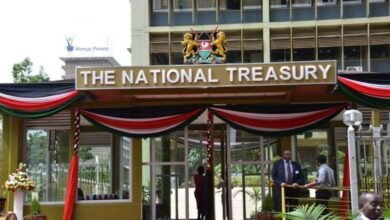
The National Assembly is now calling on the National Treasury to restructure local debt to avoid plunging the country into a financial crisis.
In a report by the Parliamentary Budget Office (PBO) dubbed Budget Options to 2022/2023 and the medium term, PBO has warned that the available resources to carter for other expenditures is being exhausted at the expense of the debt.
“This implies that domestic debt restructuring will have a greater impact on alleviating the debt service burden,” the PBO notes.
They want Treasury Cabinet Secretary Ukuru Yatani to implement the request, which if effected, would see the exchequer agree with banks and pension funds to extend terms on maturing of debts to ease the debt service burden.
PBO estimates that over 60 percent of ordinary revenue goes to debt servicing which is a first charge to the government or a mandatory expense.
This even as domestic debt service represents 74 percent of total public debt service in spite of local debt being just 42 percent of the total debt stock.

For example; at least Ksh.60 out of every Ksh.100 mobilized by the government as revenue goes to repaying debt where the share of local payments is roughly Ksh.44 for every Ksh.60 spent in debt service.
In contrast, external debt service takes up only 26 percent of total public debt service despite foreign loans representing 52 percent of Kenya’s entire debt stock.
PBO expects total debt service to hit Ksh.1.36 trillion by June 2023 rising by 16 percent from current statistics.
“Given the prevailing debt accumulation and debt service trends, the current debt ceiling cannot hold. Therefore, it may be subject to review in order to accommodate any further borrowing to fund expenditure requirements,” added the PBO.
Rising debt service costs and critical expenditures such as economic stimuli and election-related spending is set to see Kenya remain on a borrowing spree as revenues remain flat.
To keep borrowing, the PBO reckons the Treasury must seek an expansion of the debt limit which is set to tie the ceiling of Ksh.9 trillion between June next year and June 2023.
Kenya’s debt stock crossed the Ksh.8 trillion mark at the end of September bringing the size of debt closer to the limit set in late 2019.
In September this year, the government was dealt a blow in its quest to ease future cash flow pressure after MPs rejected a bid to create a special fund to raise cash for repayment of maturing debt.
The National Assembly Committee on Delegated Legislation rejected the Public Finance Management Guidelines of 2021, which sought to create a special fund for debt servicing, on grounds that the regulations lack the input of Kenyans.
Kenya’s total debt service to revenues increased to 57 percent in 2019 from 17 percent in 2012 due to an increased debt stock and changing terms on new loans including one-off repayment of syndicated loans and Eurobonds in 2019.





